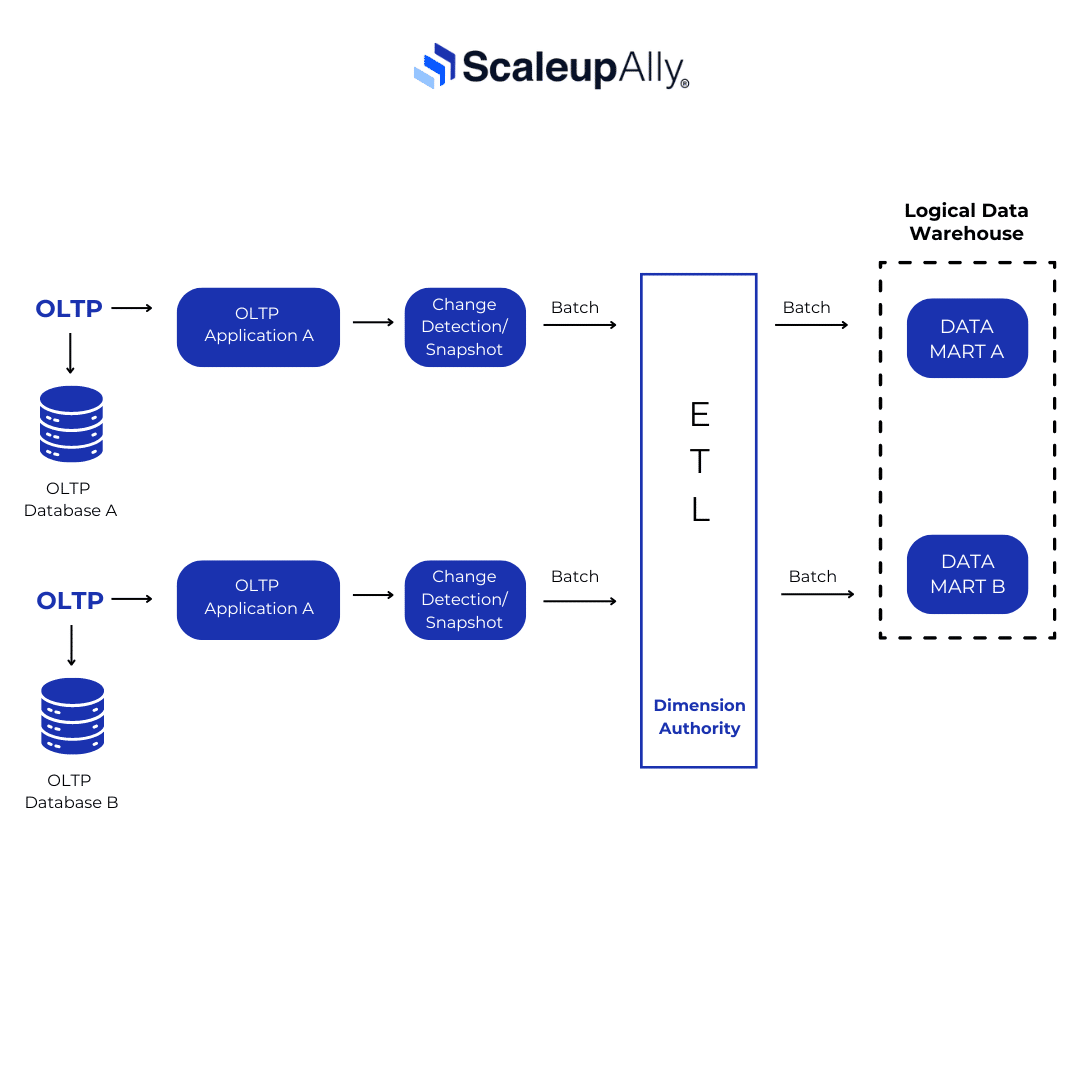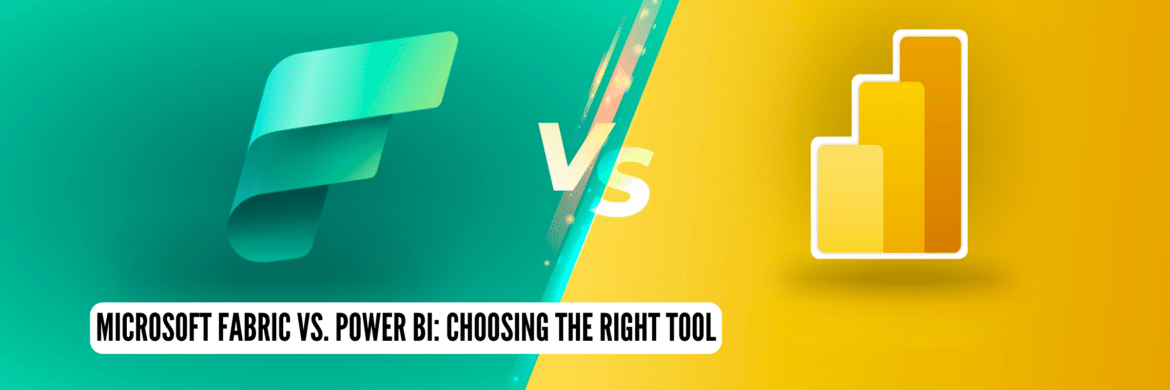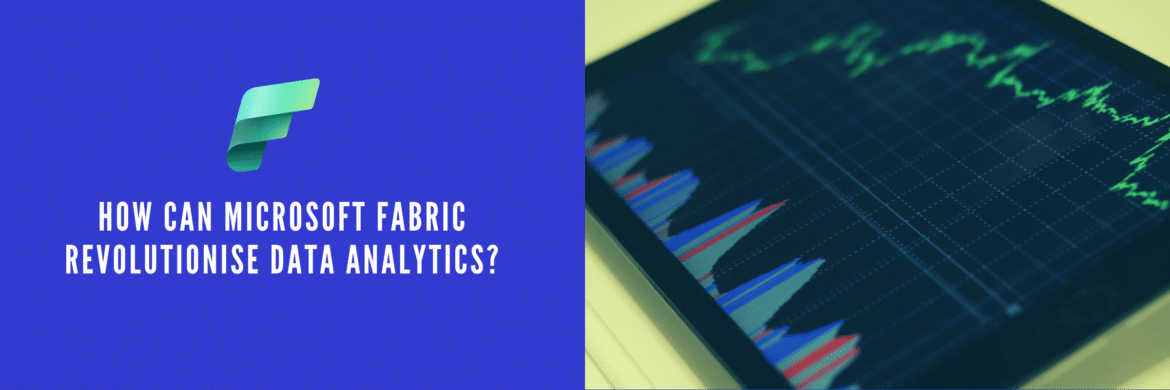
Why Small Businesses Fear ETL (And How to Make It Cost-effective for You) Insights from Our CMO (Pranay Agrawal)
ScaleupAlly Team | September 8, 2024 , 11 min read
Table Of Content
“Where do you put the fear when you choose to innovate? The fear is there, but you have to find a place to put it.” the Writerand Business Visionary Seth Godin once said.
Even though we keep hearing the names of big players, it is the small businesses around the globe that run the actual show, they are the wheels within this big wheel.
Not to forget, ‘Whenever you see a successful business, someone once made a courageous decision.’ says Peter F. Drucker (Management Consultant, Educator, and Author).
Today, to be right on the button, data becomes the cursor.
As blue-sky thinking is picking up pace, it is unimaginable to aim for long-term goals without heeding new tech innovations.
No matter your industry, a time comes when it becomes imperative to make this pivotal choice. The choice to grease the wheel with efficient technology to save your time from taxing catch-22.
Key Takeaways
- ETL (Extract, Transform, Load) helps small businesses turn scattered, raw data into actionable insights.
- Despite common fears, ETL is not just for large enterprises—affordable and user-friendly tools exist for SMBs.
- The growing volume and value of data make ETL essential for staying competitive and data-driven.
- ETL is widely used in business intelligence, data migration, integration, and big data processing.
- Misconceptions around cost, complexity, and maintenance often hold businesses back, but modern ETL solutions address these concerns effectively.
What does the market say?
- What does the market say?
- What is the ho-haa about ETL? Why do businesses fear ETL?
- What is ETL? Also, Let’s discuss some ETL (Extract, Transform, Load) applications.
- Should you start thinking about ETL? The Answer is a YES, if:
- Common Misconceptions About ETL workflow!
- Making ETL workflow your right hand: Tips from Pranay Agrawal
- Successful Stories from the ScaleupAlly Chronicles
- Embrace the Power of ETL
In this scheme of things, where big data is expanding with lightning speed, ETL comes handy. According to recent reports, in 2024, Global Data Surge has almost reached 147 zettabytes. To add to this rush, the value of big data and data analytics expanded to USD 220 bn with an expected rate of 13.5% CAGR till 2030. Here, ETL global market value is expected to grow USD 10 bn by 2030. Now that we have facts, let’s dissect ETL in more detail.
What is the ho-haa about ETL? Why do businesses fear ETL?
When it comes to managing data, small businesses often find themselves at a crossroads, scratching their heads about “what is ETL”? Enter the world of ETL “Extract, Transform, Load” a term that can sound as intimidating as it is crucial.
Many small business owners fear ETL because it seems complex and costly, but understanding and implementing it doesn’t have to be a Herculean task.
We sat down with our Chief Marketing Officer, Pranay Agrawal, to uncover why ETL can be daunting and how small businesses can embrace it without breaking the bank.
Imagine ETL as a data superhero. Its job is to take raw data (Extract), clean and organize it (Transform), and then store it in a way that’s easy to access and analyze (Load). For small businesses, this means turning chaotic data into valuable insights.
Sounds great in theory, but in practice, ETL can seem like a labyrinth of technical jargon and expense.
“Many small business owners hear ETL and think it’s just another piece of corporate tech jargon,” says Pranay. “But at its core, ETL is about making data work for you, not the other way around.”

What is ETL? Also, Let’s discuss some ETL (Extract, Transform, Load) applications.
What is ETL? ETL (Extract, Transform, Load) is a process used in various contexts across various industries, such as to train Generative AI, or for Financial Analysis, or to synchronize CRM (Customer Relationship Management) data, etc. Some of the ETL applications are:
- Business Intelligence (BI) and Data Warehousing: Both involve storage of data and ETL tech provides the very foundation to collect the data. This consolidated data is then used for reporting, analytics, and decision-making purposes.
- Data Migration: When organizations upgrade systems, merge databases, or transition to new software platforms, ETL processes are used to extract data from legacy systems, transform it to fit the new schema, and load it into the new system.
- Data Integration: It has the faculty to consolidate data from diverse sources such as databases, spreadsheets, cloud services, IoT devices, and more, hence the data consistency and unified access for analysis and reporting is easily demonstrated.
- Data Cleansing and Transformation: ETL processes clean and transform data to ensure accuracy, consistency, and compatibility across different systems and formats. This involves tasks like removing duplicates, standardizing formats, and handling missing or erroneous data.
- Big Data Processing: In big data environments, ETL tools are used to handle large volumes of structured and unstructured data, preparing it for storage, analysis, and visualization. This is an important ETL application.

Should you start thinking about ETL? The Answer is a YES, if:
- Data Redundancy – Your overall business data is stored at multiple locations i.e., various softwares, excel files, physical files, etc. OR
- Dissatisfaction with the current tool – You are not satisfied with the reporting/analytics provided by your existing tool and you are seeking some customization in it. OR
- Integration Urgency – You think that the time has come to integrate two different systems for better operational ease.
Common Misconceptions About ETL workflow!
- Cost Concerns: One of the biggest misconceptions is that ETL workflow is a luxury reserved for large corporations with deep pockets. While it’s true that some ETL solutions come with a hefty price tag, there are plenty of affordable tools designed with small businesses in mind. Pranay suggests, it is important to identify roadblocks, such as insignificant costs which may in long run turn into a financial liability. To function without data driven clarity is a sure shot way to snail paced growth, or may even face stagnancy. ETL rescues from these money leakages, and the accuracy compliments the business’s ambitious growth.
- Perceived Complexity: ETL workflow can sound like a complicated process involving lots of tech and coding, especially those without dedicated IT staff. However, many modern ETL tools come with user-friendly interfaces that simplify the process, making it more accessible.
- It’s Not Worth the Effort: Some small businesses might question if the effort of implementing ETL workflow is worth the benefits. Pranay counters this notion: “The right ETL process can save you time and provide insights that lead to better business decisions. It’s not about adding another task to your to-do list, it’s about making your data work harder for you.”
- Maintenance and Resource Constraints: ETL processes require ongoing maintenance to ensure data accuracy and relevance. Small businesses may struggle to manage this without dedicated resources.
- Fear of Data Management: There is often a fear of the unknown regarding data management and analytics. Small businesses may feel overwhelmed by the prospect of handling large volumes of data and the associated technologies.
- Integration Challenges: Integrating ETL workflow with existing systems and databases can pose integration challenges and compatibility issues, further complicating adoption. However, if you utilize established infrastructure, such as ScaleupAlly, one may find it high-yielding to continue investing in ETL tech, affirms Pranay.
Making ETL workflow your right hand: Tips from Pranay Agrawal
- Start Small and Scale Gradually: You don’t have to implement a complex ETL system all at once. Start with the basics and gradually add features as you become more comfortable.
- Choose the Right Tools: There are many ETL tools available that cater to different budgets and needs. Look for tools that offer scalability and flexibility without the heavy price tag. “Some tools offer free tiers or affordable pricing plans that are perfect for small businesses,” says Pranay.
- Put Automation into service: Many ETL processes can be automated, reducing the need for manual intervention and freeing up valuable time. “Automation can handle routine tasks and allow you to focus on the insights rather than the mechanics,” Pranay explains.
- Invest in Training: While ETL tools have become more user-friendly, a bit of training can go a long way. Consider investing in training resources or workshops to get the most out of your ETL investment. “Understanding how and when to use your ETL tool changes the game,” advises Pranay.
- Focus on ROI: Keep track of how ETL impacts your business. Measuring the return on investment can help you understand its value and justify the expense. “Look at the efficiencies gained and the insights provided,” Pranay suggests. “When you see the tangible benefits, the initial fear will turn into confidence.”
Successful Stories from the ScaleupAlly Chronicles
1. WorldTech
WorldTech, a Thailand-based e-commerce company, has a strong presence on popular E-commerce websites like Lazada, Shopee, Shop at 24, and JD Central. Specializing in products like Televisions, Home Appliances, Coffee Machines, and Car Accessories.
Initially, they were doing it all by themselves, collecting data independently from Lazada, Shopee and their offline stores. For them, sorting and identifying the suitable data increasingly became taxing.
We (ScaleupAlly) discussed their concerns, and suggested using ETL for modernizing their data management, and having a dashboard for quick accessibility for better clarity. We first started with
- Extracting data from offline sources and e-commerce platforms using APIs.
- Cleaning and structuring the data for uniformity.
- Implementing an ETL process and loading it into a centralized database.
- Connecting the data to Power BI for real-time, dynamic reporting.
After implementing this system, WorldTech now has a comprehensive view of their sales and inventory.
2. Soha Living
Founded by two visionary sisters, Brooke Watson & Shyrah Maurer, SoHa Living began its journey in 2002, inspired by their travels to bring unique home and gift items to Hawai’i.
They were struggling with merging their data from QuickBooks, DEAR Inventory, their Point of Sale (POS) system sales and their CRM system into a single reporting tool.
We (ScaleupAlly) proposed to employ ETL for modernizing their data management, and having a single reporting system using Power BI. We started with –
- Collecting data from various systems via APIs.
- Automating data extraction for real-time updates.
- Unifying the data in Power BI for cohesive, pragmatic reports.
With this, Soha Living achieved practical reporting and real-time observations. This helped them decide on urgent matters efficaciously.
Verification of Data – Stages:
- Data of one month gets verified.
- Once it is verified, we increase the duration to six months.
- Get it verified again.
- Once confirmed, Pull out all the data and start working.
Embrace the Power of ETL
Fear of ETL doesn’t have to be a barrier to harnessing the power of your data and benefits of ETL. The right approach and tools act as a support system for small businesses that can turn data into a strategic asset. “The key is to start with a clear understanding of your needs and goals,” says Pranay.
“From there, ETL becomes a powerful ally in your business growth journey.”
Pranay recalls this story from Apple. In the corners of the headquarters, one question was asked “How is Apple doing?”. To which Former Apple CEO Gil Amelio replied “It is funny (and silly) because if you are the captain of a ship with a hole in the bottom and it is sinking, the first and foremost thing you must do is to do something with the hole and save the ship from sinking.”
To sum it up, ETL not only saves the ship, but navigates it to the uncharted territories safely.
We at ScaleupAlly assist small businesses with ETL automation operational processes. If you are looking for someone to fill in the blanks, you will find us happily doing the entire book. For further enquiry, feel free to reach out to us or you may directly connect with me.
References:
Related Blogs

Microsoft Fabric vs. Power BI: Choosing the Right Tool
Struggling to choose between Microsoft Fabric and Power BI? This guide breaks down their strengths, weaknesses, and ideal uses to help you pick the perfect data analysis tool.
Tarsem Singh
Jul 17 ,
13 min read

How Can Microsoft Fabric Revolutionise Data Analytics?
Discover how Microsoft Fabric's unified platform streamlines data pipelines, empowers data pros & unlocks the full potential of your data for AI integration.
Tarsem Singh
Feb 29 ,
9 min read

Why Outsource Mobile App Development to India?
Looking to outsource mobile app development to India? Here are some benefits of mobile app development outsourcing to India.
Suprabhat Sen
Oct 31 ,
11 min read


